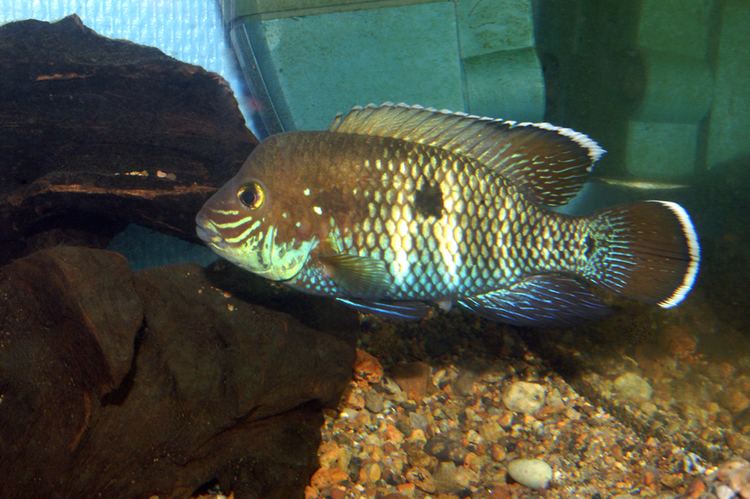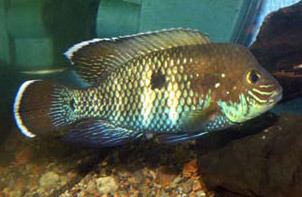Rank Species | Phylum Chordata Order Perciformes Subfamily Cichlasomatinae | |
Similar Andinoacara, Andinoacara biseriatus, Andinoacara coeruleopunctatus, Cichlasomatinae, Acaronia nassa | ||
Andinoacara stalsbergi paradise
Andinoacara stalsbergi is a species of fish in the family Cichlidae. It was previously included in Andinoacara rivulatus, but was described as a separate species in 2009. "A. stalsbergi" has vertical lines in its scale pattern and a white/gold edging to the fins. A. stalsbergi are found in northwestern Peru while A. rivulatus are found in western Ecuador.
Contents
- Andinoacara stalsbergi paradise
- Andinoacara stalsbergi biotope
- Temperament
- Sexing
- Water conditions
- Breeding
- References
Andinoacara stalsbergi biotope
Temperament
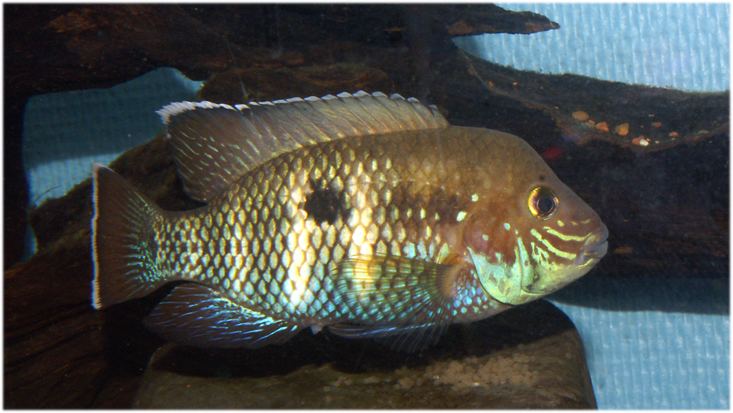
A. stalsbergi live up to the name trade name green terror. They are not as aggressive as the species Mesoheros festae, known in the trade as the red terror. It preferentially attacks others in the Andinoacara genus.
Sexing
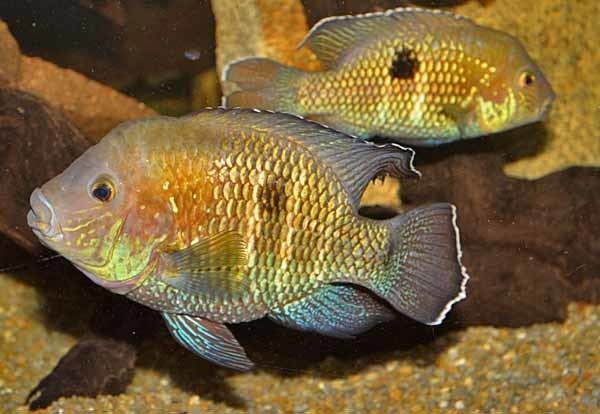
As with most cichlids, venting is the most reliable method for sexing when young. The males will develop a nuchal hump from around the first year.
Water conditions
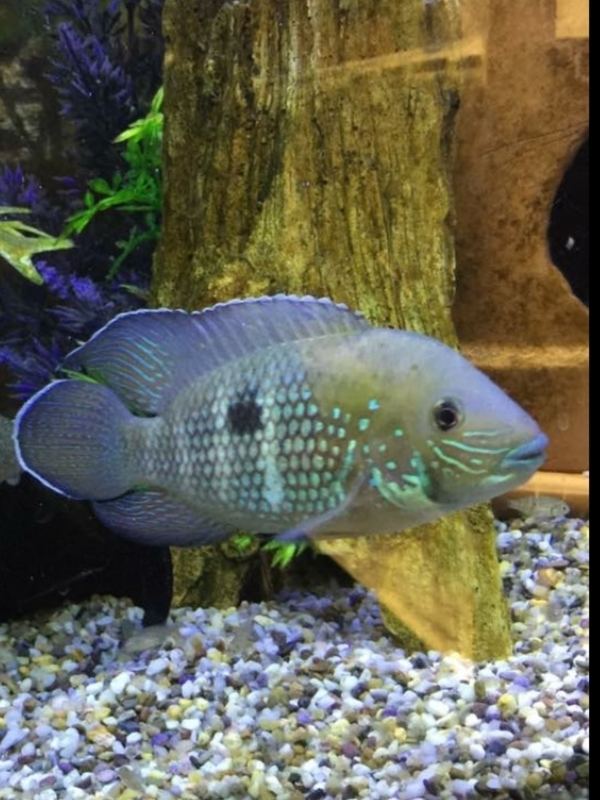
They prefer a temperature in the range 20–24 °C (68–75 °F) with a dH of 5-12 and a pH of 6.5-8.0.
Breeding
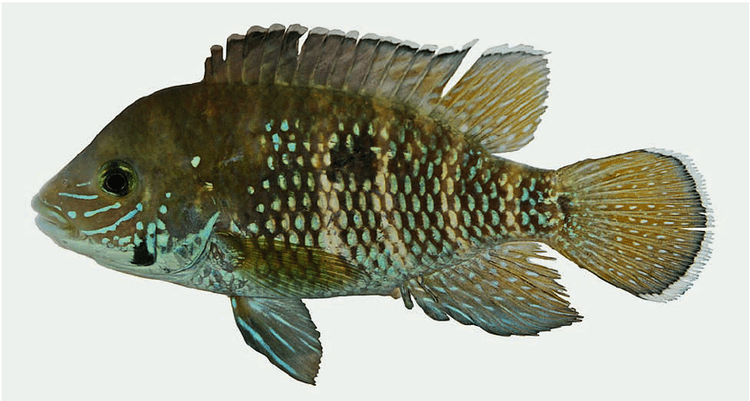
Green terrors are sexually mature at 10 centimetres (3.9 in) (males, 8 cm (3.1 in) females). Although spawning below these sizes is possible, few eggs hatch.

It requires suitable breeding sites, such as flat rocks. The pair cleans the site before breeding. The female Green terror can deposit up to 300-400 eggs, while some produce more than 600 eggs.
They are protective of their eggs. For this reason, breeding should take place in a separate tank. The eggs hatch after 3–4 days. Adults continue to guard and care for the larvae, moving the fry into pits in the substrate. At this stage, the larvae can be fed crushed flakes. After 9–12 days, the fry are big enough to swim freely. They are highly sensitive to poor water conditions and succumb absent regular water changes. Free swimming fry eat brine shrimp or fine fry powder. When the fry have reached a length of 2 cm (0.79 in) they typically experience a growth spurt and rapidly grow bigger.
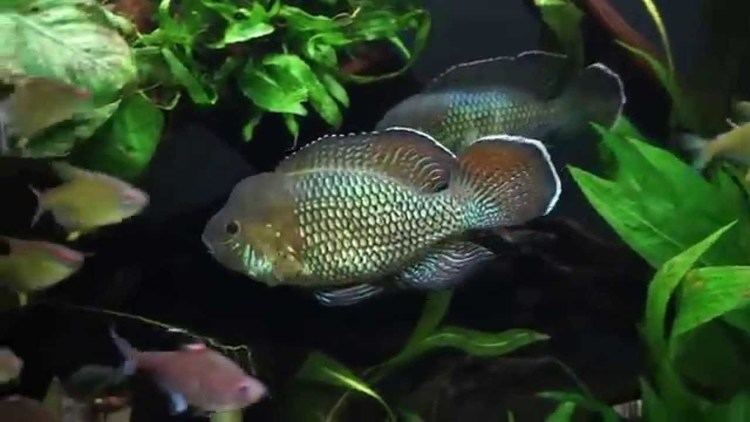
To increase brood sizes, once the pair start to clean a rock, separate the male and female with a divider for 3–5 days, increase the temperature by 5–7 °C (41–45 °F), perform a 50% water change and feed with live food (such as bloodworm).
